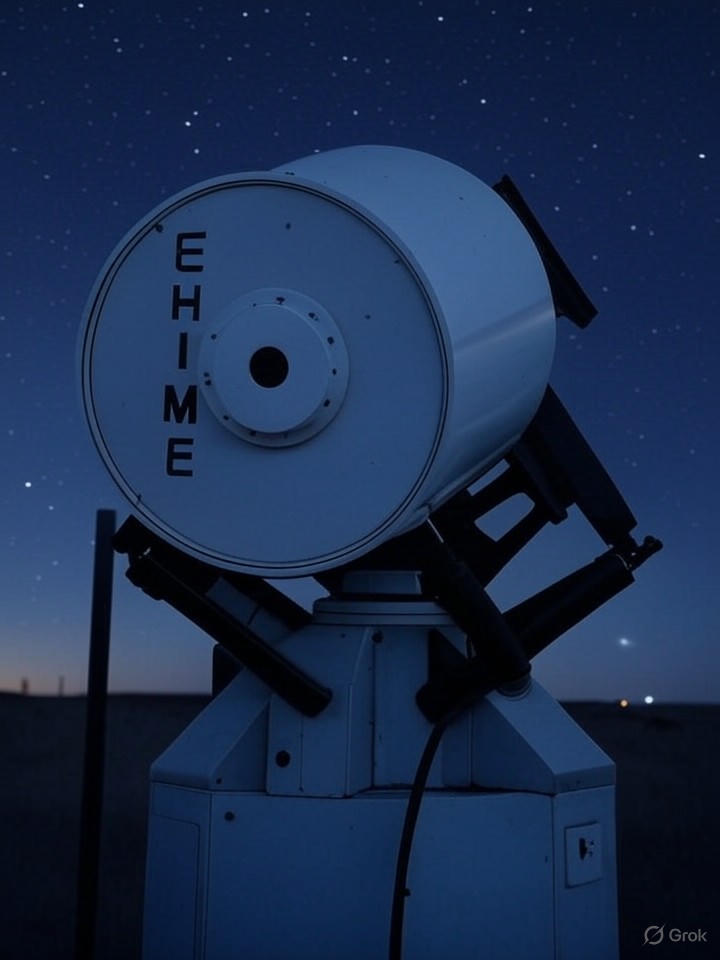Fast radio bursts (FRBs) have puzzled astrophysicists since their discovery in 2007, emitting powerful radio waves for mere milliseconds. Recently, the Canadian Hydrogen Intensity Mapping Experiment (CHIME) telescope made headlines by detecting the brightest FRB to date, known as FRB 20250316A or RBFLOAT. This remarkable event, observed in March 2025, challenges existing theories regarding the origins of these enigmatic cosmic phenomena.
Located in British Columbia, CHIME has transformed the landscape of FRB detection since it became operational in 2018. Its innovative design, featuring four cylindrical reflectors, allows it to scan large areas of the sky daily, capturing bursts that traditional telescopes might overlook. In its first year alone, CHIME identified over 500 FRBs, as reported by MIT News, providing critical insights into both one-off and repeating events and hinting at the diverse mechanisms behind them.
A Record-Breaking Burst from NGC 4141
RBFLOAT, originating from the spiral galaxy NGC 4141, is located approximately 130 million light-years away in the Ursa Major constellation. This proximity provides astronomers with the opportunity to study the burst in greater detail, challenging the common association of FRBs with extreme cosmic environments such as magnetars or black hole mergers. Using upgraded outrigger stations, CHIME successfully localized the burst to within 13 parsecs, a significant achievement for a non-repeating FRB.
As detailed in a study published in *The Astrophysical Journal Letters* and highlighted by the Dunlap Institute, the location of the burst in the galaxy’s outer regions raises questions about its progenitors. Traditionally, magnetars—highly magnetized neutron stars—have been the primary candidates for FRB origins. However, the discovery of RBFLOAT in an area dominated by older stellar populations contradicts this model, as magnetars typically form in regions with recent supernova activity.
A researcher noted, “This burst is in a surprising location,” suggesting alternative origins such as colliding neutron stars or exotic white dwarf phenomena. The unique characteristics of this burst, including its one-off nature, further complicate existing theories that have linked repeaters to distinct processes. Discussions on social media platforms, including posts from astronomers and the Canadian Space Agency, reflect the excitement surrounding this discovery and its implications for our understanding of FRBs.
Technological Innovations and Future Directions
The success of CHIME is the result of international collaboration, involving institutions such as the University of Toronto, McGill University, and MIT. Recent enhancements to the telescope, including the addition of outrigger stations in California and West Virginia, enable precise triangulation of FRBs, as reported by Green Bank Observatory. This advancement not only facilitated the localization of RBFLOAT but promises to enhance future mapping efforts, potentially revealing the energy sources behind these bursts.
Looking ahead, the integration of data from observatories like the James Webb Space Telescope could provide optical counterparts to FRBs, further enriching our understanding of these phenomena. One researcher remarked on social media that this discovery “challenges magnetar theories,” calling for a reevaluation of our approach to cosmic radio signals.
The significance of FRBs extends beyond their origins; they serve as valuable cosmic probes. Their dispersion through intergalactic plasma can measure the universe’s “missing” baryons, contributing to models of cosmic evolution. RBFLOAT offers a cleaner signal due to its proximity, allowing researchers to analyze it with less distortion from intervening matter. Scientists describe this burst as “as energetic as the sun, but lasting only milliseconds.”
As ongoing CHIME observations continue, questions remain regarding the brightness of RBFLOAT. Is it an anomaly, or does it represent a new subclass of FRBs? The collaborative efforts of researchers around the globe may soon demystify these bursts, enhancing our understanding of extreme astrophysics.
The detection of over a thousand FRBs has revealed emerging patterns, with some originating from “dead” galaxies while others exhibit rhythmic repetition. The case of RBFLOAT, as discussed in *News@York*, underscores the necessity for diverse models to explain these phenomena. As research evolves, FRBs may illuminate aspects of dark matter distributions or unveil exotic physics. For now, the discovery of the brightest FRB stands as a pivotal moment in the quest to understand the radio-lit void of space.
